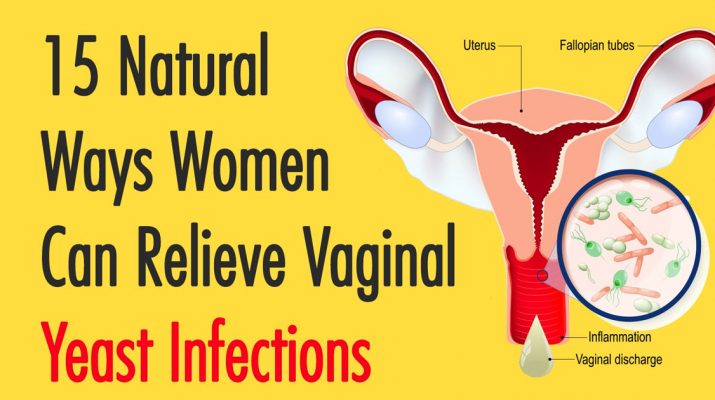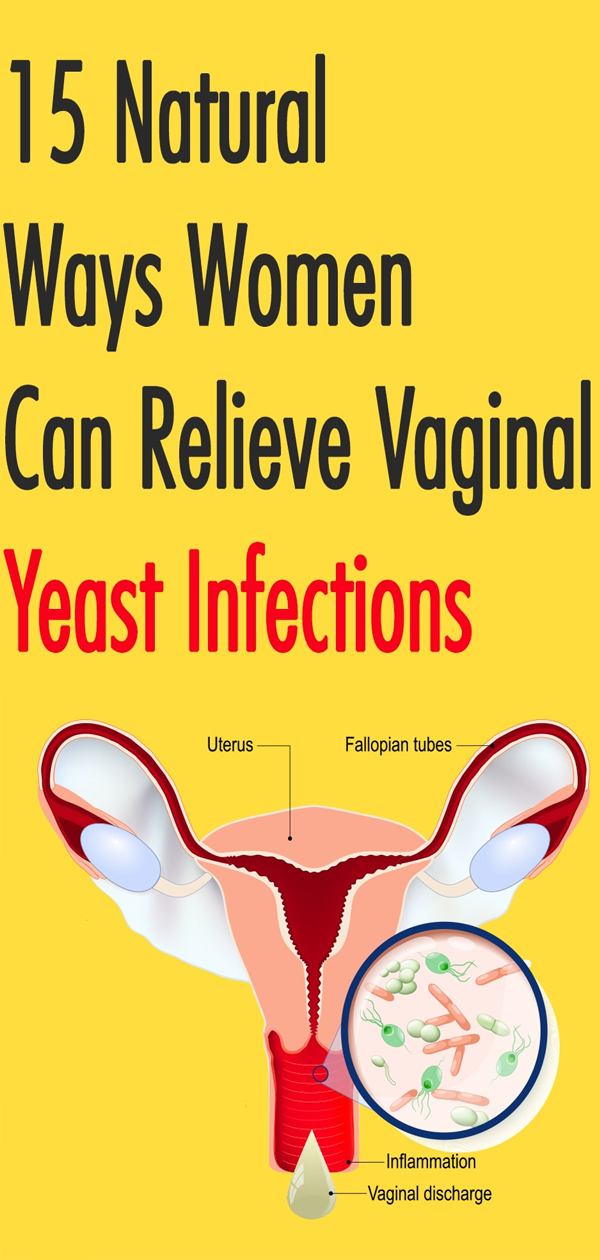Ever go to the bathroom and suddenly smell, a cheesy, fishy, or bread-like aroma after you wipe? This can signal a yeast colony has moved into your nether regions. Yeast infection symptoms can make you uncomfortable, embarrassed, and the infection can pose a major health risk to your reproductive system and urinary tract. Luckily, treatments are easy, natural, and you can do so in the comfort of your home for most cases.
What Is A Vaginal Yeast Infection?
Candida is a fungus that lives inside your body and causes infections. Like most flora in our bodies, we want a balance between the good, the bad, and those falling in the middle. Candida serves our bodies as a food source, but it can multiply. This fungus is also responsible for other infections, so some of the remedies on this list might also help thrush, athlete’s foot, diaper rash, and jock itch.
Lactobacillus acidophilus, a powerful probiotic, feeds off the natural candida in our bodies. If you don’t have a healthy amount of probiotics in your diet, you risk the development of a yeast infection.
The majority of women who’ve had a yeast infection can self-diagnosis their condition and begin treatment of choice immediately. For the lucky few who’ve never suffered from one, here are the most common yeast infection symptoms:
• Rash
• Fishy, yeasty, or cheesy odor
• Redness
• Soreness
• Swelling
• Burning sensation when you pee or have sex
• Severe itching around and inside your vagina
Your discharge might also appear different. It often takes on a thick, cheesy appearance. However, discharge can vary greatly due to hormones, or you might see no changes at all.
When You Should See Your Doctor
While natural remedies are often our go-to method, sometimes they aren’t enough. Other cases, such as pregnancy and nursing mothers, should always consult their doctors before attempting any treatments.
See a Doctor:
• If you’ve never had a yeast infection
• You’re pregnant
• You’re nursing
• Your yeast infection symptoms worsen
• Your symptoms don’t improve in 7-14 days
15 Natural Treatments For A Vaginal Yeast Infection
The good news is most natural treatments take household ingredients you probably already have on hand, essential oils in your cabinet, or you can easily find the ingredients in a grocery store or online.
Many women have found these treatments to be effective. Plus, they feel better using homeopathic, herbal, and natural remedies over conventional methods that expose them to antibiotics and further increase their resistance. In modern times, this is a large reason why women will seek alternative treatments because when antibiotic treatments become necessary, they want them to work.
Some stubborn infections might still require conventional treatment. Medications can days before you actually feel the results and your yeast infection symptoms disappear. You can still use remedies alongside most conventional methods to relieve your symptoms immediately.
1. Yogurt DIPPED TAMPON SUPPOSITORY
Harvard Health states women might see relief by using a vaginal probiotic suppository.
This suppository method might be a good option for women who regularly use tampons. If you don’t, you should consider choosing a natural or organic brand to reduce irritation to your already sensitive vagina. You will also need a variety without an applicator.
Diy Vaginal Suppository
You will need:
• Tampon, no applicator
• Organic plain yogurt, unsweetened, unflavored
Instructions:
1. Saturate the tampon in yogurt
2. Insert tampon
3. Leave it for one hour
4. Repeat as needed or every 3 hours
If you’re also using an OTC suppository treatment, you’ll want to choose another method from the list.
2. Eat More Yogurt
Women have used yogurt to treat yeast infection symptoms for centuries. Numerous studies support its effectiveness too. Unlike other treatments, this method is completely safe for pregnant women who tolerate dairy (use a dairy free brand if you’re lactose intolerant, vegan, or a vegetarian). Organic Greek yogurt that is unflavored and unsweetened will be your best bet, but it must contain live cultures of Lactobacillus acidophilus.
Eating a yogurt a day can help support your good flora and keep the bad bacteria and fungus at bay.
3. Take a Probiotic Supplement or Premade Suppository
You can purchase probiotic supplements and suppositories nearly anywhere these days, but they’re not regulated by any single agency aside from USDA Certified Organic brands. Try to choose those over non-organic labels so that you know you’re buying the real deal. Make sure they contain active lactobacillus acidophilus cultures.
4. Organic Coconut Oil
A study performed on children found that coconut oil is effective at treating candida due to its antifungal properties. This can be helpful for treating the outside of the vagina, and you simply apply it directly to the affected area.
5. Tea Tree Essential Oil
Using the DIY suppository method, you can further increase its effectiveness by adding a few drops of tea tree essential oil to the yogurt. Tea tree oil has multiple healing benefits, including antifungal. You can also use this method with coconut oil or jojoba oil and apply it as an ointment to the outside of your vagina.
6. Apple Cider Vinegar Soak
Draw a lukewarm bath and add ½ cup of this remedy to your water. Soak for at least 20 minutes and repeat as necessary to ease symptoms. Apple cider vinegar does counteract harmful bacteria, but don’t confuse a soak with a douche. Douches flush out your vaginal canal and take away the good with the bad. Soaking allows your good bacteria to remain.
If you’re sensitive to the smell of vinegar, you can add your favorite essential oils and dried herbs to reduce the odor. The good news is you won’t smell like vinegar even if you don’t scent your water.
7. Eat Garlic
Garlic kills candida according to laboratory tests. Adding more of this healing herb might shorten the lifespan of your infection. Some women will chew a whole clove daily, but you might also prefer an odorless supplement. The upside is garlic has many health benefits.
Don’t apply garlic paste, cloves, or essential oil to your vaginal region. Studies reported burns as a side effect with topical treatments.
8. Vitamin C
Whether you eat vitamin C rich foods or take a supplement, many women swear by this for treating yeast and other infections. However, like garlic, you should avoid topical applications because of burn concerns.
Foods Rich In Vitamin C
• Red and Green Bell Peppers
• Kale
• Papaya
• Strawberries
• Broccoli
• Kiwi
• Mango
• Pineapple
• Oranges
9. Oil Of Oregano Essential Oil
A 2001 study says you’ll require oil of oregano (Origanum vulgare) to treat a yeast infection. You won’t apply it to your vagina, but you can use it during aromatherapy sessions, as an inhalant, or you can apply it to your skin away from your vagina using a carrier oil, like coconut oil.
10. Aloe Vera Gel
Break open an Aloe Vera leaf and apply the gel directly to the affected area. A 2007 study found it reduced fungal activity. You might consider using a prepackaged gel, but you should be sure it’s organic and pure. Another option is to purchase leaves in the produce section of your grocery or natural foods store.
11. Drink Cranberry Juice
Cranberries have antioxidants, a large number of vitamins, and antifungal properties. In natural medicine, women use it as both a treatment and preventive measure against yeast and urinary tract infections. Just be sure to choose 100% cranberry juice, organic if possible, and avoid cocktails and blends. You can also eat whole, unsweetened cranberries too.
13. Green Tea
Tea, including green varieties, offer you immune support. The cooled tea bags double as a safe remedy for easing your symptoms too. Drink as much green tea as you like, but avoid sweetening it. Use the cooled or chilled tea bags as needed, and you can safely apply them directly to your vaginal area.
14. Peppermint Essential Oil
Well-diluted peppermint essential oil can alleviate your symptoms while its antifungal properties take care of the yeast. You can make a homemade rinse or add essential oil to your bath water. Don’t apply directly with a carrier oil as you might cause inflammation.
15. Epsom Salt Soak
Much like the apple cider vinegar remedy, you can use Epsom salts instead to ease your yeast infection symptoms and kill off the fungus. Add 2 cups of the salts to your warm bath water. You can also use this with apple cider vinegar or your favorite essential oils, including peppermint, oil of oregano, and tea tree oil.
Final Thoughts On Yeast Infection Treatments
Yeast infections are common. Many of the remedies here derived from folk medicine. Some have scientific studies backing their effectiveness with promising results. Most of all, they’re natural options that pose little to no health risk.
Women can take precautions to lower their chances of another infection, but they’re not foolproof. Should an infection occur again, you can try one or more of the treatments. If your symptoms don’t clear up after seven to fourteen days, you should consult your doctor.


